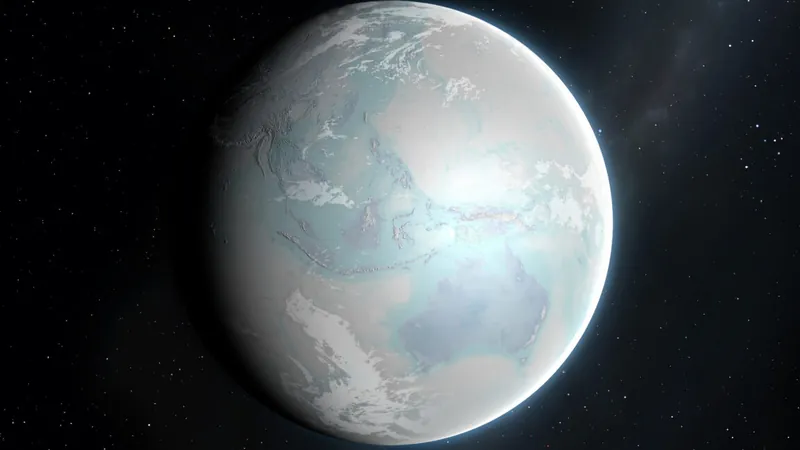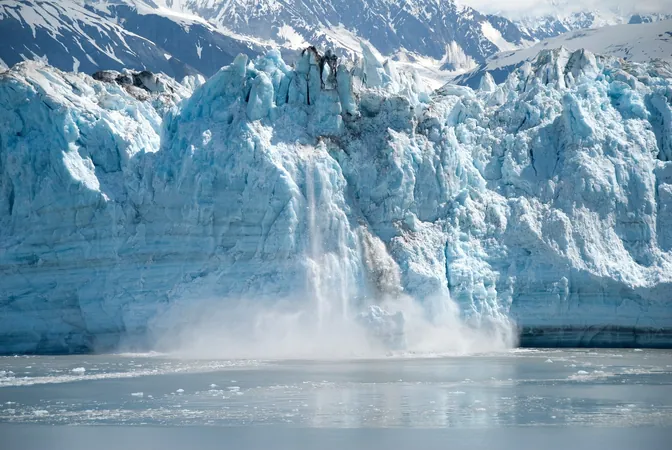
Unveiling the Mysteries of Snowball Earth: What Did Our Planet Look Like 700 Million Years Ago?
2024-11-13
Author: Nur
Unveiling the Mysteries of Snowball Earth: What Did Our Planet Look Like 700 Million Years Ago?
Around 600 to 700 million years ago, Earth experienced a dramatic transformation known as the Snowball Earth period, characterized by extreme global glaciations. This is notably significant because it precedes the Cambrian explosion, where diverse and complex animal life began to thrive. But what did this frozen Earth actually look like? Recent studies are shedding light on this ancient enigma, revealing tantalizing insights into our planet’s icy past.
Climate Models and Global Cooling
Climate models have shown a chilling phenomenon: when large expanses of dark ocean are obscured by reflective ice, a cooling feedback loop is initiated, plunging the planet into an ice age. Evidence of this past has been found in glacial materials located off tropical coastlines—suggesting that even near the equator, ice once ruled supreme.
New Discoveries in Colorado
While we have a general understanding of the snowball periods, our comprehension remains largely incomplete. But now, researchers have made a groundbreaking discovery in the Tavakaiv sandstones alongside the Front Range of Colorado's Rocky Mountains. This area, previously positioned near the equator, likely harbored a colossal ice sheet that was melting from beneath due to intense volcanic activity.
Identifying ancient glacial deposits can be quite a challenge, as ice sheets often scour the landscape down to bedrock, leaving behind only loose rubble. While we can detect glacial remnants offshore, finding solid evidence on land has proven elusive. Antarctica presents a mixed picture: despite its massive ice sheets, areas with minimal precipitation exist, leading to sublimation—the process by which ice transforms directly into water vapor.
Shedding Light on Continental Interiors
A team of geologists is now investigating glacial deposits in the Tavakaiv sandstones, which offer clues about what icy interiors might have looked like during the Cryogenian Period. Their findings indicate that these sandstones, characterized by dark rock intrusions rich in quartz and hematite (a form of iron oxide), were formed under high pressure from a massive ice sheet.
The hematite intrusions provide a wealth of information. They not only suggest remarkable geological activity but also offer a potential method for dating the deposits. The presence of uranium trapped in the hematite allows scientists to establish a timeline for their formation, revealing that these deposits date back to the Sturtian glaciation, which spanned from 715 to 660 million years ago.
A Glimpse into Earth's Icy Past
The origins of these sandstones are exciting. They are thought to be a product of fine sediment ground up by glaciers. The ice sheet’s enormous pressure likely created conditions for liquid water to exist at the base, which would force its way into cracks in the sandstone, generating the vertical bands we see today.
While liquid water under thick ice sheets might seem contradictory, processes such as geothermal heating or volcanic activity could provide the necessary warmth. Indeed, evidence of volcanic activity from the same period in nearby Idaho supports the idea that intermittent volcanism occurred in Colorado, supplying the heat to create the mineral-rich fluids that formed the hematite deposits.
Though evidence supports at least one area of interior continental ice coverage, it does not universally apply to all regions. The coexistence of glacial landscapes and dry valleys—like those in modern Antarctica—suggests a more diverse climatic picture during the Snowball Earth epochs.
Conclusion
This research not only expands our understanding of Snowball Earth but gives insight into how our planet’s climate has fluctuated over millions of years, showcasing the Earth’s ability to change dramatically in response to various geological forces. As scientists continue to piece together this icy puzzle, the lessons learned shed light not just on our past, but perhaps on the future of our planet amidst ongoing climate change. Stay tuned for more exhilarating discoveries from Earth's ancient history!



 Brasil (PT)
Brasil (PT)
 Canada (EN)
Canada (EN)
 Chile (ES)
Chile (ES)
 España (ES)
España (ES)
 France (FR)
France (FR)
 Hong Kong (EN)
Hong Kong (EN)
 Italia (IT)
Italia (IT)
 日本 (JA)
日本 (JA)
 Magyarország (HU)
Magyarország (HU)
 Norge (NO)
Norge (NO)
 Polska (PL)
Polska (PL)
 Schweiz (DE)
Schweiz (DE)
 Singapore (EN)
Singapore (EN)
 Sverige (SV)
Sverige (SV)
 Suomi (FI)
Suomi (FI)
 Türkiye (TR)
Türkiye (TR)